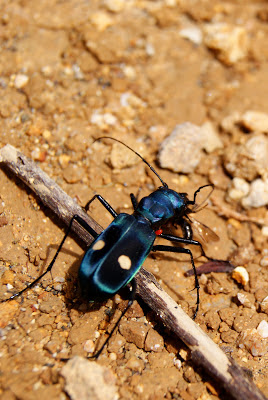Thailand might have spoiled us a bit, but Costa Rica is not
a budget-friendly country (at least not when your budget is backpacker-small).
Knowing that much cheaper, less-touristed Nicaraguan awaited us just over the
border, we kept our stay in Costa Rica short.
To get the most bang for our buck, we headed to the tourist Mecca
of Monetverde and Santa Elena. Not only was the area chockfull of activities,
but we had hopes that competition might keep prices low.
Surprisingly cold, windy, and rainy, Monteverde was, less
surprisingly, also fairly expensive. Overflowing with eco-tourism gimmicks (ziplining,
canopy suspension bridges, bungee jumping, night hikes, day hikes, and so on
and so on), everyone claimed to have the best deal, the best view, the best
wildlife. There were butterfly gardens and orchid gardens, frog exhibits and
snake exhibits, a bat jungle. When we arrived at the hotel, each attraction was
pricier than listed online. And when you went to buy tickets the price jumped
again. Admission to the cloud forest reserves in the area was $19 per person, double
that if you wanted a guide. The greed
was exhausting.
So we found the one free thing to do in town.
The trail, really more of a muddy road, left from the far
edge of town and wound its way up to the local television channels’ towers. It
wasn’t in the rainforest reserves, but on a cloudless day the view from the top
was supposed to be excellent.
Fortunately, we had a single clear day during our time in
Monteverde. After leaving town and making all the appropriate lefts and rights,
we found ourselves at the trailhead, joined by a determined little dog. Tail
wagging and heads held high, we started off.
Almost immediately, the trail started switchbacking its way
skyward, heading up at a near impossible angle. Fortunately fueled by a
hostel-made breakfast, we made our way slowly higher. And higher. And higher.
Despite the harsh incline and the muddy conditions, we were
in one helluva beautiful situation. All around us, critters flitted, crawled,
and soared. Numerous blue morpho butterflies, iridescent azul wingspan bigger
than an outstretched hand, floated past us, refusing to pause even momentarily
for photographs. A large, brown agouti trotted across our path, only to be
promptly chased off by our eager canine friend.
Three kilometers later, we managed to reach the summit, but
only with the help of a trick we learned during our coffee tour in Colombia:
walking backward. We did probably 60 percent of our hike walking uphill while
facing downhill. Given a fairly level surface and even incline (because humans
cannot turn their heads around like owls), it is infinitely easier to walk
backward when going uphill.
What should have been a climactic moment gazing out across
Costa Rica, catching a view of the nearby(ish) volcano, turned out to be
shrouded in cloud cover and dappled with rainfall. But the hike, free and
solitary, was an adventure in itself. Journey, not destination, right?
















